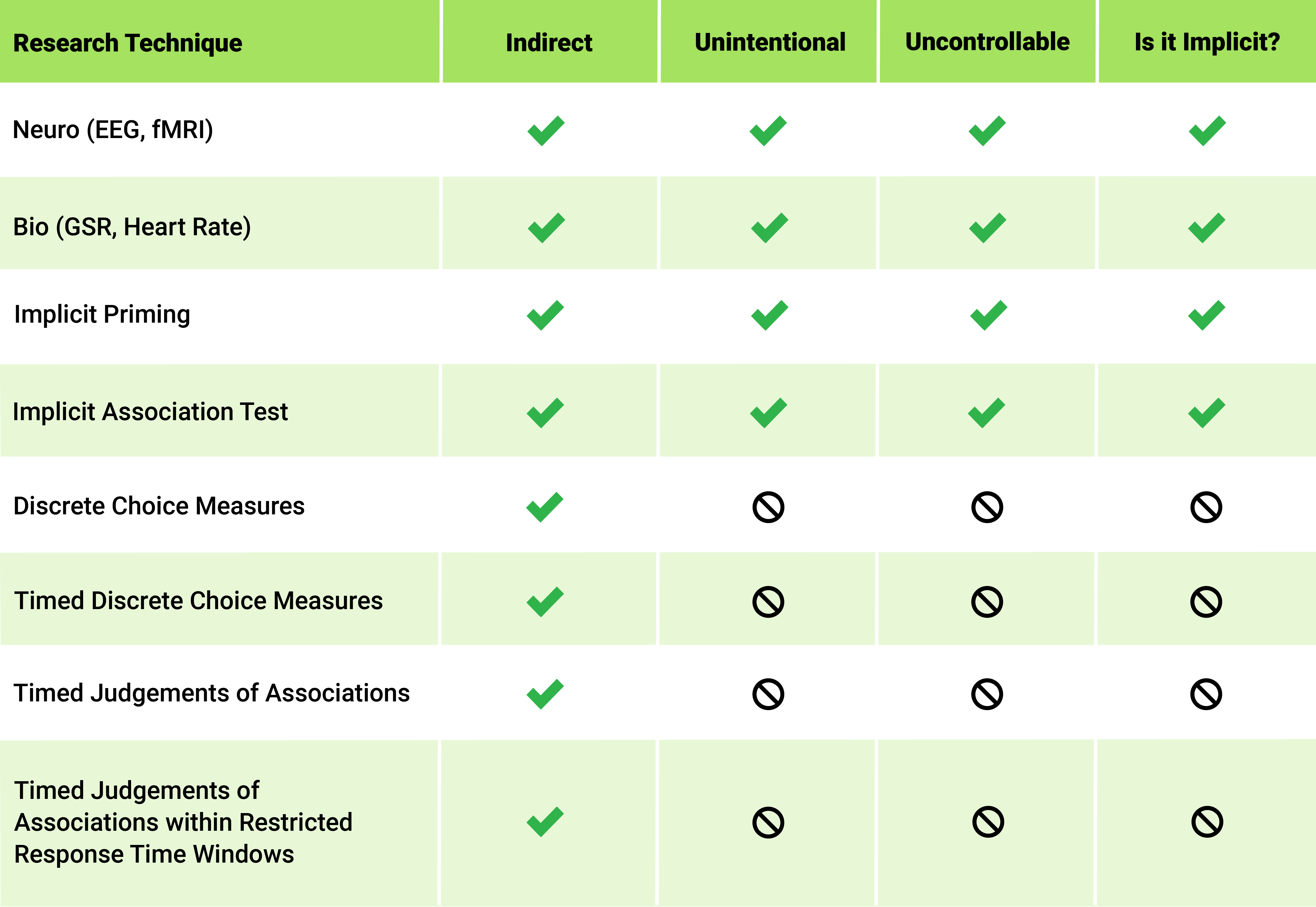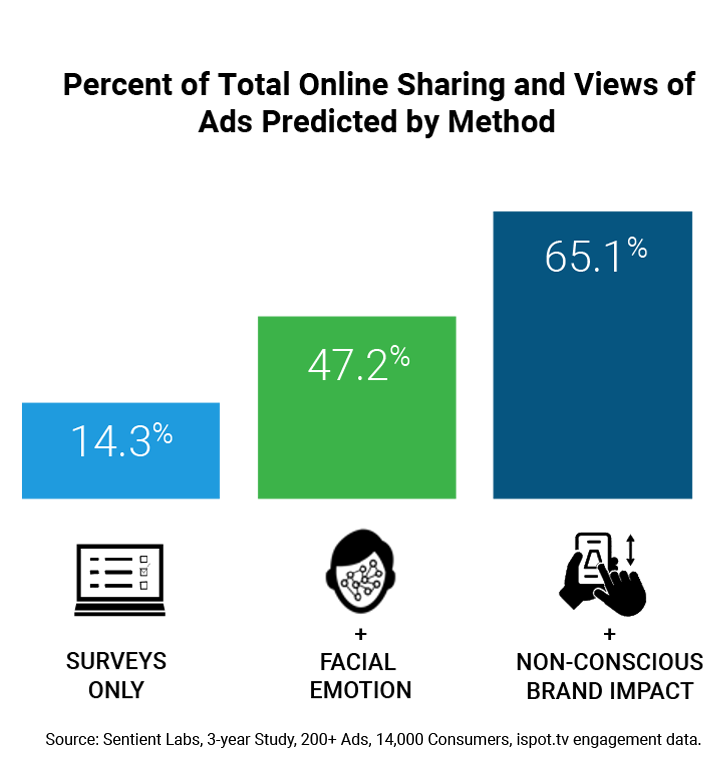Using Implicit Measures to Uncover What Motivates Customers
What is implicit?
Before understanding the relevance to incorporating implicit measures and methods within marketing research, it’s important to understand what implicit is–and how it varies from explicit. As explained within GreenBook’s Insights from Psychology: Implicit Vocabulary, “explicit and implicit refer to the ability to observe something directly or not”. An explicit attitude or belief is one you have conscious awareness of. Conversely, implicit attitudes or beliefs are those you are unaware you hold. An individual’s conscious, explicit attitudes and beliefs may not always align with their implicit. Many people may unknowingly hold, or have biases they won’t admit to, that impact their decision-making or point of view–especially in topics related to gender and race. For example, consciously or socially, someone may identify as a feminist. Simultaneously, their subconscious is gender biased. Acknowledging the impact implicit has on making judgments helps researchers uncover areas of cognitive dissonance or affirm explicit attitudes.
What qualifies as a truly implicit research technique?
With so many marketing research professionals using buzz words and alluring methods to entice advertisers, it becomes hard to distinguish which researchers gather implicit data. An implicit technique requires several conditions according to Nosek, Hawkins, and Frazier. It must be indirect, unintentional, and not controllable. Techniques that are solely indirect do not equal implicit. With these parameters, implicit research includes Implicit Association Testing, Affective Priming, Neuro methods (EEG & fMRI), and Bio methods (SCR, GSR, Heart Rate, Respiration). It’s important to note that Quick Conscious Association Testing (Response Latency) while useful in determining associations and brand recall, is not implicit. Measuring response time is intentional and controllable. A truly implicit measure is far superior at capturing unique elements of the decision-making process. Implicit methods, such as Implicit Association Testing and Implicit Priming, are quantitative, measured at the individual level, easily scalable, and are truly implicit. Sentient’s patented implicit technology, Sentient Prime®, also qualifies as truly implicit.

Why is this important for marketing research?
Integrating implicit data with explicit more accurately and holistically explains consumer behavior and allows brands to reduce marketing waste. Sentient Labs conducted a 3-year study using over 200 advertisements and 14,000 consumers to learn that what people are willing to say in surveys only accounts for 14% of the behavioral response. Employing surveys in combination with emotional expression and non-conscious brand impact evaluations is 4-5 times as accurate in predicting whether people will engage or share an ad. Using implicit measures can improve your ability to predict how a campaign will perform. Sentient’s use of Emotion AI provides unprecedented access to explanations of behavior and delivers timely scientific insights. Our platform advantages brands by providing them with intel on unconscious bias and emotions –as well as conscious– to ensure informed decisions are made at every step of the creative process.

For more information on implicit measures check out our publication, “Is It Implicit?”.
Interested in learning how to utilize the power of Emotion AI for your brand?
Fill out the contact form below to connect with our team and demo the platform.
By: Mia Noble
Creative Services Specialist
